
Corvairs and Chaparrals?
This is one of the many articles published in the monthly NJACE Fanbelt
newsletter.
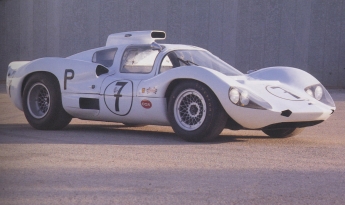
During the 1960s, Jim Hall and Hap Sharp constructed and raced some of
the most innovative racing cars ever built. Headquartered at
Rattlesnake Raceway, a lonely private sports car track located in the Texas
desert, (not the public oval track of the same name located in Arizona), Jim
and Hap developed USRRC, Can Am and FIA World Championship racing machines
that baffled the competition.
Their Chaparral cars were among the
first racers in the world to feature torque box chassis tubs, automatic
transaxles, composite wheels, aerodynamic spoilers, wings and ground effects
equipment. How could such a small operation develop such advanced
vehicles?
It was rumored that Jim and Hap had some help in the development of
Chaparral cars. And, as events unfolded, it became apparent that much
of this help was coming straight from Frank Winchell's Engineering R&D
department at Chevrolet. That's right, the same Frank Winchell who
provided GM with engineering support for the legal defense of the Corvair.
Although the concepts behind Chaparral cars were mostly the product of Jim
Hall's own creative genius, much of the detailed engineering came from
Winchell's R&D department. Chevrolet would work up Jim's concepts,
fabricate many of the complex components, and leave it up to Jim and Hap to
assemble the machines and race them. This arrangement enabled Frank's
engineers to explore cutting edge automotive technology while remaining in
compliance with Chevrolet's official corporate policy, which forbade direct
participation in motor sports.
Casual observers know that, in terms of styling, the Chaparral 2A, 2C, and
2D racers bear a striking resemblance to the lines that Larry Shinoda penned
for the Monza GT show car. And real trivia experts will notice that
Chaparral 2As, 2Cs and 2Ds sported Corvair taillights. Yes, when Phil
Hill and Jo Bonnier piloted their Chaparral 2D to victory at Nurburgring in
'66, the competing Ferraris and Porsches were chasing a set of glowing red
lenses lifted from the rear of a '64 Corvair sedan.
But the relationship between Jim Hall, Hap Sharp and the Chevy Corvair was a
lot more fundamental than just copycat styling and gimcrackery.
Corvair was a catalyst for the chemistry between Chevrolet R&D and Chaparral
Cars.
In interviews that lead to the 1992 publication of the book, Chaparral by
Richard Falconer, Jim Hall indicated that the exchange of technology began
when Frank Winchell asked Chaparral Cars to test Corvairs at Rattlesnake
Raceway in 1963. These tests were conducted to determine the absolute
limits of Corvair handling and were made necessary by the wave of Corvair
lawsuits that were being litigated against General Motors.
In reflecting upon the Corvair handling tests, Jim Hall admitted that the
folks at Chaparral were able to flip Corvairs, but he also noted that he
could achieve the same result from any car. The following quote
appears on pages 56 and 57 of Chaparral:
"
I did quite a lot of work on the
Corvair. I used to drive it around with the tires deflated so the rims
touched the ground. We had to show how far out you could get it and
keep the car the right way up…. What we found out was that you can
turn over any passenger car on dry concrete - and it doesn't matter whether
it's a Corvair or a Ford Fairlane. All you needed to do was to be
brutal with the steering.
"
Prior to the Corvair handling tests, Chaparral racecars were obviously the
product of independent constructors operating without substantial aid from
Chevrolet. The original Chaparral 1 racer was designed and built for
Jim Hall by Troutman and Barnes in California. And one of the two
Chaparral 2A prototypes, designed and built by Jim Hall and Hap Sharp in
their own shops at Rattlesnake Raceway, featured an aluminum block
Oldsmobile V-8 as late as 1963.
All this changed after the Corvair handling tests. One of the
Chaparral 2A prototypes was shipped to Michigan where its was dissected by
Winchell's engineering staff. Shortly thereafter, Winchell's staff
reciprocated by transporting their own sports racing prototype, named the
GSIIB, to Rattlesnake Raceway for "testing." The GSIIB sported a unique
2-speed automatic transaxle; a feature that appeared on Chaparral 2As during
the 1964 racing season.
In 1965, Jim Hall arrived at the tracks with a
new model, the Chaparral 2C. Underneath the 2C bodywork was a near
replica of the GSIIB aluminum monocoque tub. Chaparrals were soon
equipped with Chevy engines delivered from Michigan. The engines were
equipped with alloy heads, alloy cylinder blocks and Weber-style carburetors
fabricated in Chevrolet machine shops. Although there was no further
involvement in Corvairs, Chaparral Cars obviously received preferential
treatment from Chevrolet until 1970.
However, the Corvair handling issue was not forgotten. In a series of
indignant letters written to the federal Department of Transportation in
1971 and 1972, Ralph Nader insisted that the National Highway Traffic and
Safety Administration, ("NHTSA"), should examine GM test reports PG15699 and
PG17103, dated June 14, 1963 and November 4, 1963, respectively. These
two test reports provided incontrovertible evidence that Chevrolet knew
Corvairs could be made to flip over. Demanding a federal recall of
Corvair cars, Nader asserted that the reports proved that GM's continued
defense of the Corvair design constituted an act of "gross negligence".
NHTSA responded to this and other allegations propounded by Nader against
the Corvair. In its July 1972 "Evaluation of the 1960-1963 Corvair
Handling Stability" NHTSA concluded that the handling tests reflected
extreme driving techniques that would result in almost any production car
flipping over and thus, GM's test reports were not incriminating against the
Corvair in particular.
Is it possible that the GM reports cited by Nader were the product of the
tests conducted by Chaparral Cars? Or were the GM reports the result
of tests conducted in-house? Given the risks surrounding any kind of
litigation, why did Frank Winchell share the Corvair problem with Jim Hall
and Hap Sharp? The Corvair mysteries continue….
Sources:
Chaparral, by Richard Falconer with Doug Nye. Motorbooks
International, Osceola, WI, USA, 1992.
Evaluation of the 1960-1963 Corvair Handling Stability, U.S.
Department of Transportation, National Highway Traffic Safety
Administration, Washington D.C., July 1972.
Email correspondence, dated 12/29/99 and 12/30/99, between the author and
Carl Thelin, P.E. (ex-employee of Chevrolet Engineering R&D and
automotive safety consultant).
Email correspondence, dated 12/28/99 and 12/29/99, between the author and
Paul VanValkenburgh), (ex-employee of Chevrolet Engineering R&D and author).

Corvair - The most innovative cars and trucks ever produced in America!
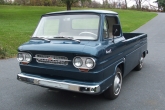
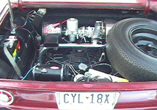
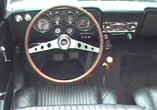
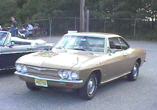
Click HERE to go back to the NJACE Home Page. Edited by redbat01@verizon.net on 10/23/2023